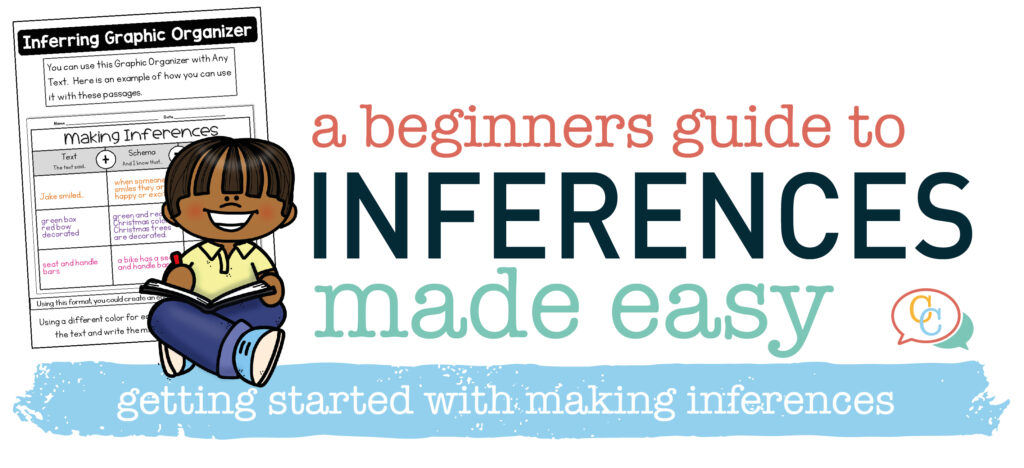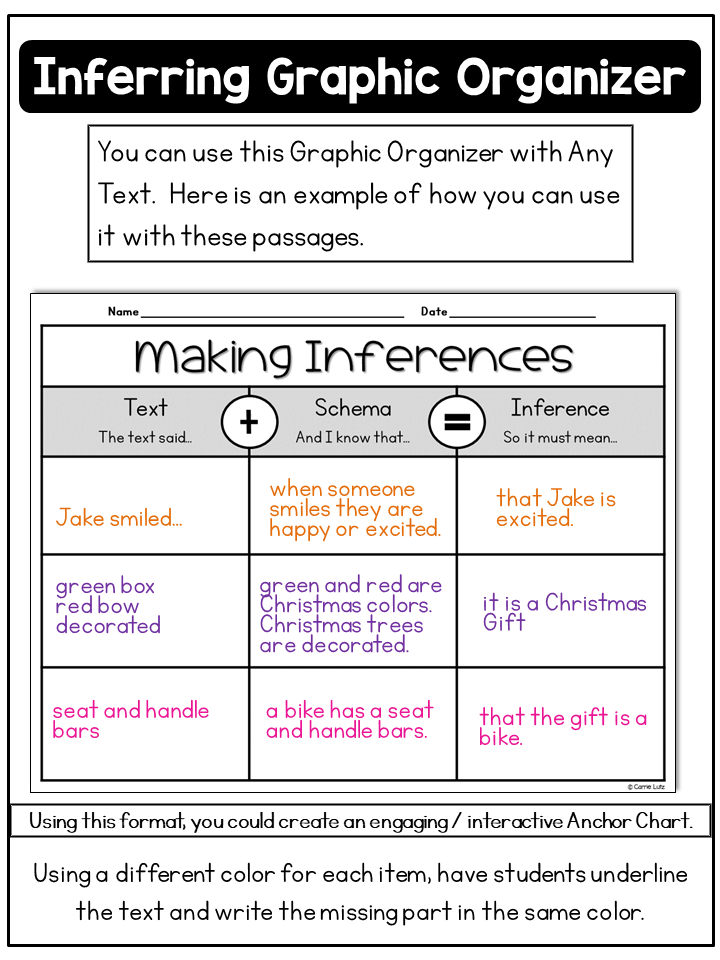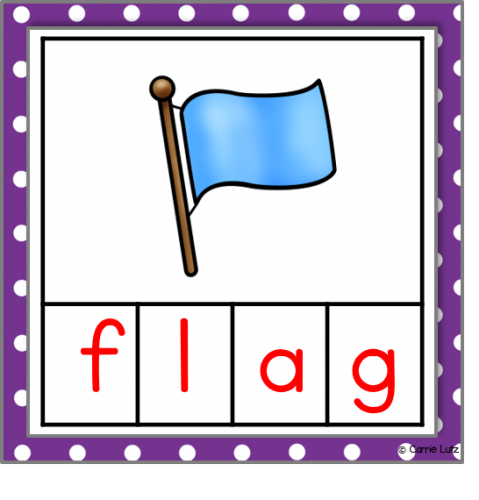
Getting Started with Making Inferences
The “Making Inferences” Dialogue with Students
The “Making Inferences” Thought Process
There is definitely a thought process to making inferences. Schema is a must. That’s why some kids can’t make an inference even if it’s a simple one. They do not have the background knowledge necessary to associate the text with something they already know. But for things they do know about, like feelings, you can use this graphic organizer. Using the gradual release model, fill in one part and ask the students to fill in the others. For instance, you could fill in “when someone smiles, they are happy or excited.” Then you can ask the student to tell you what TEXT made you think that or what INFERENCE can be drawn from your schema. Transfer the format to a piece of chart paper and you’ve made an engaging, interactive anchor chart.
Use this Inferring Graphic Organizer to model the thought process while inferring.



Authors and Making Inferences
I tell my students that authors are sneaky. They sneak thoughts into your head. Authors don’t even have to use the exact words to make you think what they are thinking. This is what makes inferring super fun and even though it is a tough skill, we can have a lot of fun with it!
Making Inferences Intervention
Doing this simplified version of teaching Making Inferences can also help students in 2nd and 3rd grade who are still struggling with this skill. I use reading passages for examples, but you can do this with any book where you find a good inferring example. You can also use state released assessments to model this intervention.
Give it a try!
If you think this backward approach will help your students make inferences more easily, give it a try! This Gradual Release Model helps you slowly release the skill to your students, giving them baby steps to start.
To try it for FREE, add your name here.
Struggling Readers?
Check out this blog post about how to use SOUND BOXES with your students. This resources teach kids how to carefully isolate sound so they can spell and read words with ease. Pick up a Free Resource while you are there.



Who doesn’t love a good Bundle?
Fiction and Nonfiction Mini Passages
Let me know what you think!
Please leave a comment if this helped your students with MAKING INFERENCES and don’t forget to pin the image below to your teaching resources board for future reference.
Thanks for stopping by!
~ Carrie

Leave a Reply